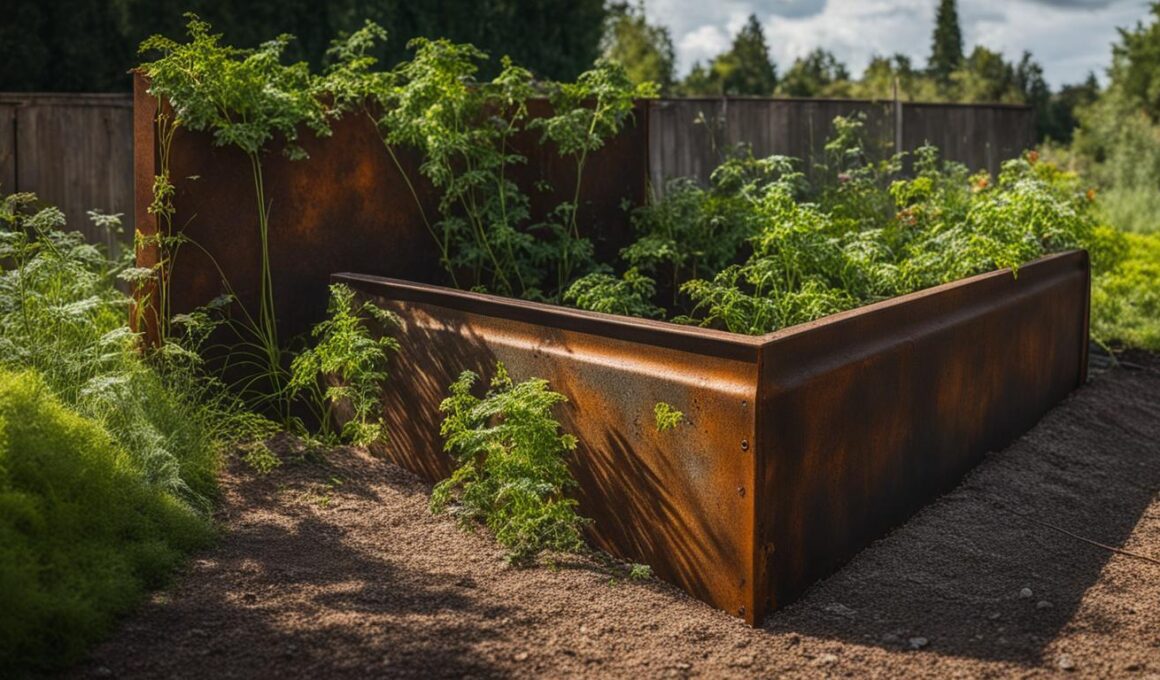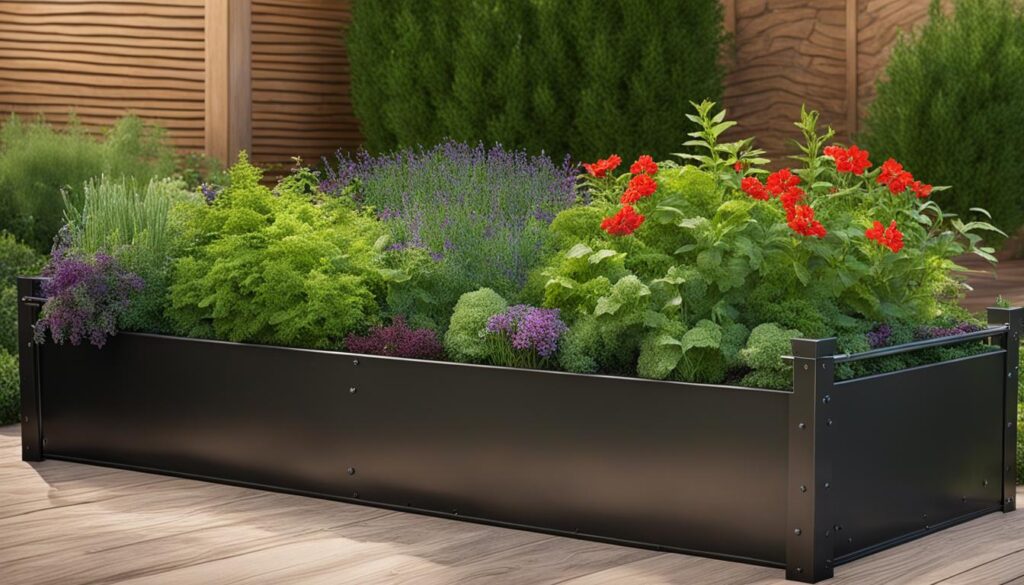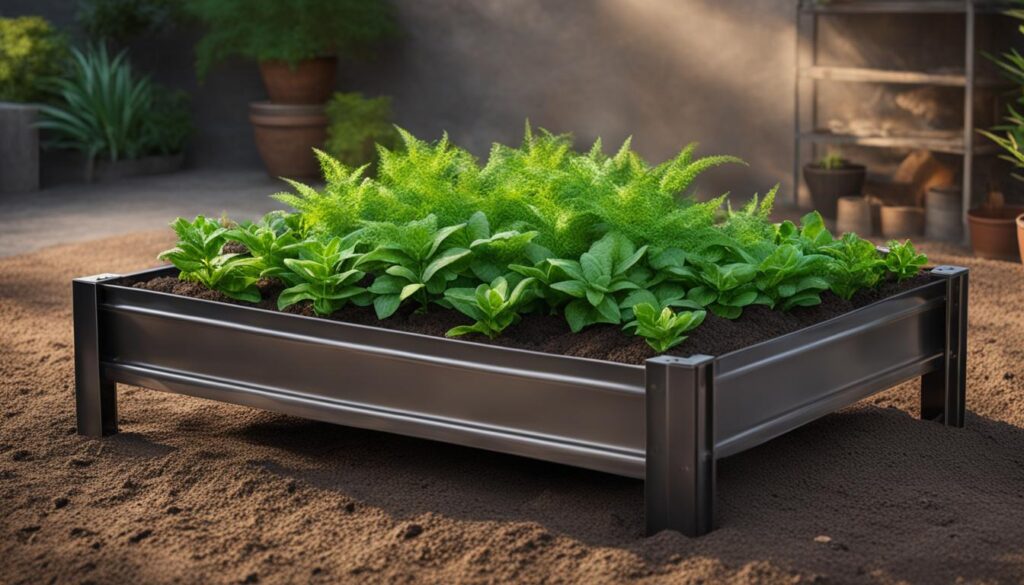Metal raised garden beds are a popular choice among gardeners due to their durability and longevity. They typically last for at least 20 years, with proper maintenance. The lifespan of a metal raised garden bed largely depends on factors such as the type of soil it comes into contact with and the level of acidity in the soil. High levels of acidity can cause the zinc layer on the metal to deteriorate more quickly, shortening the lifespan of the bed. However, if the soil is pH neutral or steps are taken to neutralize acidic soil, a metal raised garden bed can last even longer. Metal beds also have the advantage of being resistant to rust and rot, making them a more durable option compared to wood. Overall, metal raised garden beds offer a long-lasting solution for gardeners looking for a low-maintenance and reliable option for their gardens.
Post Summary
- Metal raised garden beds typically last for at least 20 years with proper maintenance.
- The lifespan of a metal raised garden bed depends on factors such as soil acidity and maintenance.
- High levels of acidity can shorten the lifespan of a metal raised garden bed.
- Metal beds are resistant to rust and rot, making them more durable than wood.
- By neutralizing acidic soil and practicing proper maintenance, the lifespan of a metal raised garden bed can be extended.
Benefits of Metal Raised Garden Beds
Metal raised garden beds offer several advantages over other materials like wood. Firstly, they are highly durable and can last for up to 20 years with minimal maintenance. Their zinc coating helps protect against corrosion and rust, making them suitable for outdoor use. Metal beds are also resistant to pests and weeds, providing a barrier to keep unwanted critters and plants out of the garden.
Additionally, the color of the metal bed can be chosen to suit specific climate needs. Light-colored metal beds reflect light, keeping the soil cooler in hotter climates, while darker-colored beds absorb heat, warming up the soil in colder climates. Metal raised garden beds are also easy to assemble and transport, as they come in small boxes and are lightweight. These beds offer a convenient and long-lasting solution for gardeners looking for durability and ease of use.
The Advantages of Metal Raised Garden Beds
Metal raised garden beds provide numerous benefits for gardeners. With their durability and resistance to rust and pests, these beds offer a long-lasting solution for outdoor gardening. The ability to choose the color of the bed helps regulate soil temperature, catering to different climate needs. Additionally, the lightweight nature of metal beds makes them easy to assemble and transport. These advantages make metal raised garden beds a popular choice for gardeners seeking reliability and convenience.
| Advantages of Metal Raised Garden Beds | Benefits |
|---|---|
| Durability | Metal beds can last up to 20 years with minimal maintenance. |
| Rust and Pest Resistance | The zinc coating on metal beds protects against corrosion and keeps pests away. |
| Temperature Regulation | The color of the metal bed can be chosen to reflect or absorb heat, maintaining the ideal soil temperature. |
| Easy Assembly and Transport | Metal beds come in small boxes and are lightweight, making them convenient to set up and move around. |
Overall, metal raised garden beds offer numerous advantages for gardeners. From their durability and resistance to rust and pests to their ability to regulate soil temperature and ease of assembly, metal beds provide a reliable and convenient solution for thriving gardens.
Advantages of Wood Raised Garden Beds
Wood raised garden beds offer several benefits that make them a popular choice among gardeners. One of the key advantages is their affordability and availability. Wood is widely accessible and tends to be more budget-friendly compared to metal beds. This makes it a great option for gardeners who are conscious of their spending or have a limited budget.
Another benefit of wood raised garden beds is their versatility. Wood can be easily customized to fit specific size and shape requirements. Whether you need a small bed for a balcony garden or a larger one for a backyard, wood can be easily cut and shaped to meet your needs. This flexibility allows you to create a garden bed that suits your space perfectly.
Wood beds also have good thermal properties, which can help maintain the temperature of the soil. They provide insulation against extreme temperature fluctuations, keeping the soil warmer during colder months and cooler during hot summers. This can create a more ideal growing environment for plants, especially those that are sensitive to temperature changes.
Furthermore, wood raised garden beds offer a rustic and natural aesthetic that many gardeners appreciate. The warm tones and natural texture of wood can enhance the overall visual appeal of the garden, adding a touch of charm and character. This natural look can blend seamlessly with various garden styles and complement the surrounding landscape.
Comparison of Metal and Wood Raised Garden Beds
| Metal Raised Garden Beds | Wood Raised Garden Beds | |
|---|---|---|
| Cost | Higher initial cost, but longer lifespan | Lower initial cost, shorter lifespan |
| Customization | Less customizable | Highly customizable |
| Thermal Properties | Reflects light, keeping soil cooler in hot climates | Maintains soil temperature in all climates |
| Aesthetic | Modern and sleek appearance | Rustic and natural look |
| Lifespan | Lasts up to 20 years with minimal maintenance | Lasts 7-10 years (10-15 years for rot-resistant wood) |
While wood raised garden beds have many advantages, it’s important to note that they have a shorter lifespan compared to metal beds. On average, wood beds last between 7 and 10 years, depending on the type of wood and climate conditions. Rot-resistant wood varieties, such as cedar or redwood, can extend the lifespan to 10-15 years.
Overall, wood raised garden beds offer a cost-effective and customizable option for gardeners. Their affordability, versatility, thermal properties, and natural aesthetic make them a popular choice among those looking to create beautiful and functional garden spaces.
Factors to Consider When Choosing Between Metal and Wood Raised Garden Beds
When deciding between metal and wood raised garden beds, there are several factors you should consider to make an informed decision. These factors include budget, durability, aesthetics, and climate suitability.
1. Budget: Metal raised garden beds tend to be more expensive upfront compared to wood beds. However, metal beds offer a longer lifespan, which can result in cost savings over time. If you have a higher budget and are looking for a long-lasting option, metal beds may be the better choice.
2. Durability: Metal beds are more resistant to moisture, pests, and rot, making them a durable option for outdoor use. On the other hand, wood beds may require more maintenance over time to prevent rot and deterioration.
3. Aesthetics: Consider the visual appeal of the raised garden bed. Wood beds offer a more natural and rustic look, while metal beds have a sleek and modern appearance. Choose a material that complements the overall design and style of your garden.
4. Climate: Take into account the climate conditions in your area. Metal beds are better suited for high humidity or rainy climates, as they are more resistant to moisture and rust. Wood beds can be a good choice for cooler climates as they provide better insulation for the soil.
By evaluating these factors, you can determine whether a metal or wood raised garden bed is the best fit for your needs and preferences. Consider the longevity, maintenance requirements, visual appeal, and climate suitability to create a productive and aesthetically pleasing garden.
The Importance of Soil Acidity for Metal Raised Garden Beds
Soil acidity is a critical factor to consider when it comes to the lifespan and durability of metal raised garden beds. The level of acidity in the soil can directly impact the rate at which the zinc layer on the metal bed deteriorates. If the soil is too acidic, it can cause zinc leaching, leading to faster decomposition and shortening the overall lifespan of the bed. It is crucial for gardeners to test the pH level of their soil and make necessary adjustments to maintain a balanced and optimal environment for their metal beds.
To ensure the longevity of a metal raised garden bed, it is recommended to use pH-neutral or slightly alkaline soil. If the soil is found to be too acidic, gardeners can neutralize it by adding lime or other alkaline amendments. By creating a soil environment that is conducive to the preservation of the zinc layer, gardeners can maximize the lifespan of their metal beds and enjoy many years of productive gardening.
“The pH level of the soil plays a crucial role in the longevity of metal raised garden beds. It is important to maintain a balanced pH level by testing the soil and making necessary adjustments. By neutralizing acidic soil and ensuring a suitable environment for the metal bed, gardeners can ensure optimal durability and lifespan.” – Gardening Expert
Recommended pH Levels for Metal Raised Garden Beds
| Type of Soil | Recommended pH Level |
|---|---|
| Acidic Soil | Neutralize with lime or alkaline amendments |
| Neutral Soil | 6.5 – 7.0 |
| Alkaline Soil | Use acidic amendments as needed |
Proper management of soil acidity is key to maintaining the integrity of metal raised garden beds. By testing the pH level, making necessary adjustments, and ensuring the use of appropriate water sources, gardeners can create an environment that promotes the longevity of their metal beds. With the right care, metal raised garden beds can continue to thrive and provide gardeners with a durable and reliable solution for their gardening needs.
Conclusion
When it comes to choosing between metal and wood raised garden beds, durability and lifespan are key factors to consider. Metal raised garden beds offer a long-lasting solution, with a lifespan of up to 20 years. They are resistant to rust, rot, pests, and weeds, making them a durable and low-maintenance option. On the other hand, wood raised garden beds are more budget-friendly and customizable, but have a shorter lifespan of around 7-10 years.
Your decision should be based on your specific needs and preferences. If you prioritize longevity and minimal maintenance, metal beds are the way to go. If you prefer a more affordable and customizable option, wood beds are a great choice.
Remember to consider factors such as your budget, aesthetic preference, climate, and soil acidity requirements when making your decision. By choosing the right material for your raised garden beds, you can ensure a durable and productive garden for years to come.
FAQ
How long does a metal raised garden bed typically last?
Metal raised garden beds typically last for at least 20 years with proper maintenance.
What are the benefits of metal raised garden beds?
Metal raised garden beds offer durability, longevity, resistance to rust and rot, and protection against pests and weeds.
What are the advantages of wood raised garden beds?
Wood raised garden beds are affordable, customizable, and have good thermal properties.
What factors should be considered when choosing between metal and wood raised garden beds?
Factors to consider include budget, durability, aesthetics, and specific gardening needs.
Why is soil acidity important for metal raised garden beds?
Soil acidity can affect the lifespan of metal raised garden beds, as high levels of acidity can cause the zinc layer to deteriorate more quickly.
– Will Using the Right Screws Extend the Lifespan of a Metal Raised Garden Bed?
Yes, choosing the right screws is crucial for extending the lifespan of a metal raised garden bed. Using the wrong type of screws can lead to rust and corrosion, compromising the structural integrity of the bed. Opting for the right screws will ensure a secure and durable assembly, ultimately prolonging the life of the garden bed.










